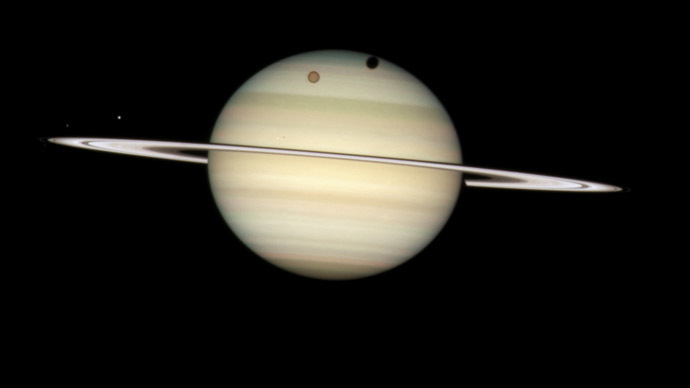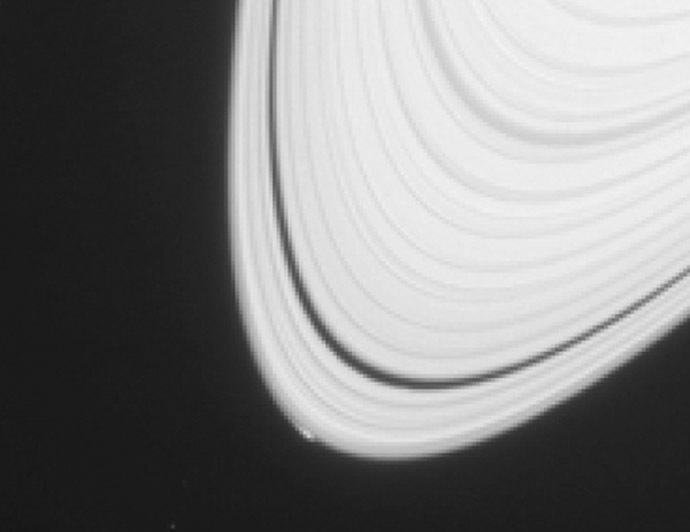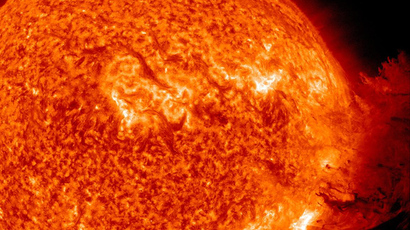Saturn’s newborn: Scientists say planet’s ring may give birth to baby moon

Scientists believe a tiny satellite is emerging from the edge of Saturn’s ring system. A disturbance in the planet’s outer ring, called ‘Peggy,’ could grow into a separate icy moon – possibly the last one of its kind.
Images taken by NASA’s Cassini spacecraft have earlier revealed an arc of 750 miles (1,200 kilometers) long and six miles (10 kilometers) wide on the edge of Saturn’s icy A ring. The so-called “disturbance” is about 20 percent brighter than its surroundings and is accompanied by “unusual protuberances in the usually smooth profile at the ring’s edge,” NASA has said.
A new study, published online by the journal Icarus on Monday, suggests that the phenomenon is caused by the gravitational effects of a nearby object. In other words, something might be growing in Saturn’s ring, just like its other icy moons formed, according to popular theories.
“We have not seen anything like this before,” says Carl Murray of Queen Mary University of London, the report’s lead author. “We may be looking at the act of birth, where this object is just leaving the rings and heading off to be a moon in its own right.”

Although Cassini was too far away from the spot to visibly capture the theoretical object, in the scientific community it has already gained a life of its own, receiving the informal name Peggy.
Cassini’s orbit is set to move further out along the A ring by late 2016, allowing it to gather more details about Peggy, said Cassini project scientist Linda Spilker, of NASA's Jet Propulsion Laboratory in Pasadena, California.
Though Peggy is not likely to grow larger – and may be falling apart, NASA says – its discovery has offered researchers much insight into how Saturn’s icy moons may have formed in more massive rings long ago.
Saturn’s 62 mostly-ice moons vary in size – the farther from the planet, the larger it is. Particles that make up Saturn’s rings are also predominately ice. Based on these facts and others, researchers believe Saturn’s moons “formed from ring particles and then moved outward, away from the planet, merging with other moons on the way,” according to NASA.
The moon-formation process within Saturn’s rings may now end with Peggy, NASA says, as the rings are likely too depleted to produce more moons.
"The theory holds that Saturn long ago had a much more massive ring system capable of giving birth to larger moons," Murray said. "As the moons formed near the edge, they depleted the rings and evolved, so the ones that formed earliest are the largest and the farthest out."















